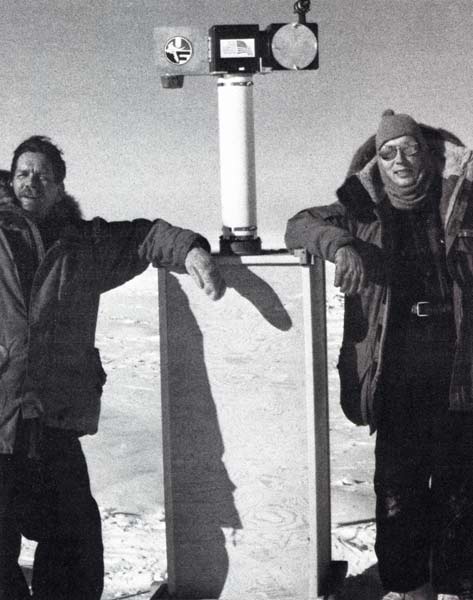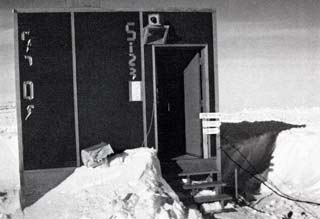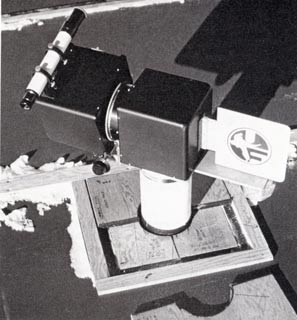The SPOT-2 telescope
|
The first University of Florida optical telescope, "SPOT-1," didn't work very well...despite further evaluation by a UF team during the 1984-85 summer season. Based on their findings, they worked on an extensive modification, as discussed in this article in the Antarctic Journal 1985 review issue. The result was essentially a completely new instrument as seen here--a two-mirror siderostat with a 7.8 cm diameter f/6 achromatic lens and various filters. The moving parts were controlled with stepping motors; the entire system was operated by a Dynatem RM-65 computer system employing an 8-bit 6502 microprocessor. Data was collected on floppy disks and later copied to magnetic tape. The entire system except for the optical head was located inside of the building (abstract page from the Bulletin of the American Astronomical Society, Vol. 20, p. 952). Some of the engineering data was sent back to Florida using the ATS-3 satellite. | |
|
The photo at the top of this page is by Bill Murphy, from the 1986 review issue of the Antarctic Journal; The two lower photographs are from this article in the Antarctic Journal's 1987 review issue. Both of these references contain more detailed information about the project. The instrument, like its SPOT-1 predecessor, did not perform well; it was removed in 1987-88. John Oliver remained involved in astronomy for the rest of his life; he died on 10 February 2011 Here is an obituary from the American Astronomical Society. | |


